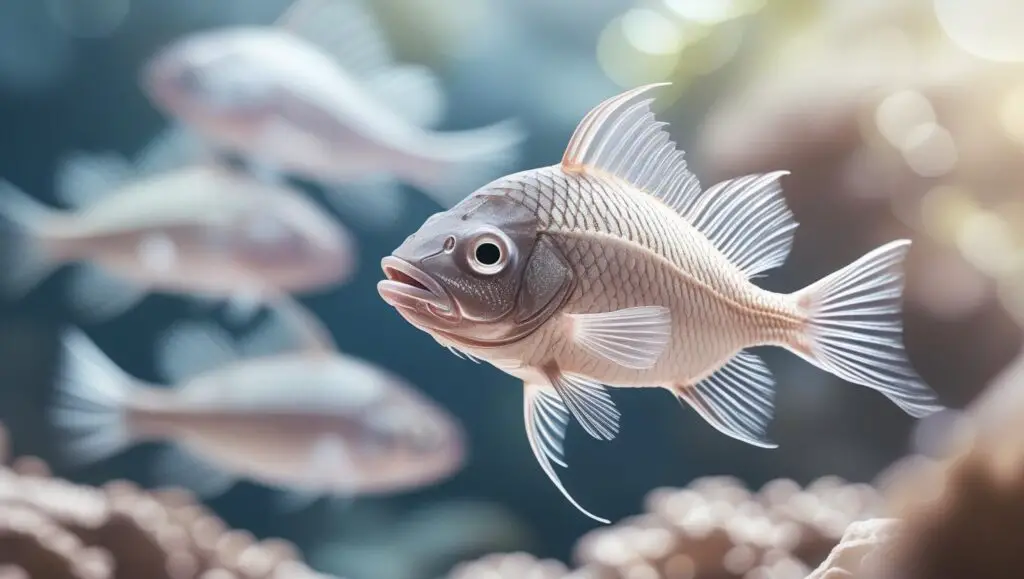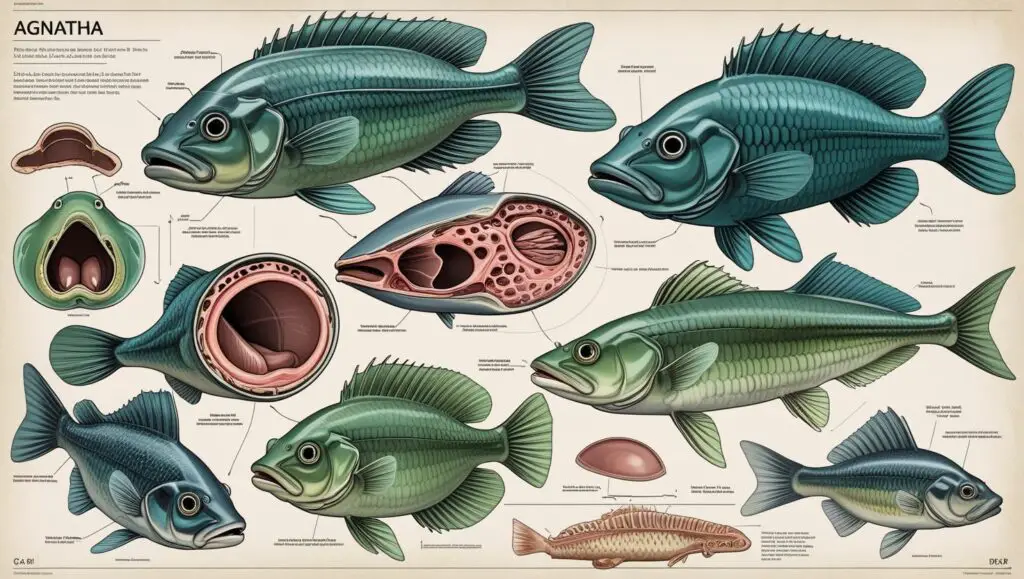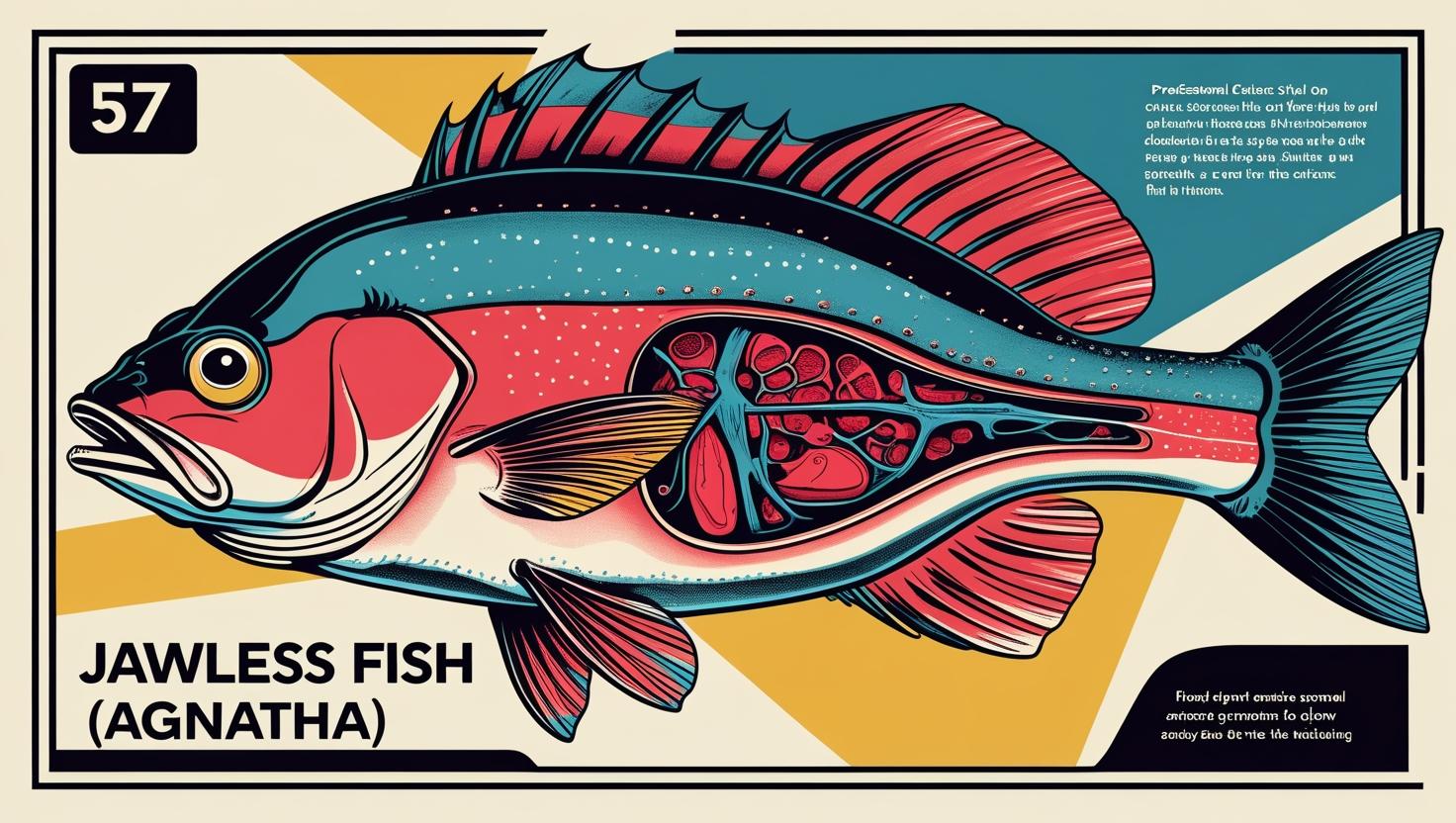Jawless fish, scientifically grouped under the superclass Agnatha, represent the most primitive lineage of vertebrates alive today. Unlike their jawed counterparts, these fascinating creatures offer a unique glimpse into early vertebrate evolution. With no jaws, paired fins, or scales, jawless fish characteristics define a distinct evolutionary path that diverged over 500 million years ago.
What Are Jawless Fish?
Jawless fish belong to the Agnatha class, a group that includes two extant families: lampreys (Petromyzontida) and hagfish (Myxini). Once far more diverse during the Paleozoic era, modern jawless fish are the last living members of a lineage that flourished in ancient seas.
These animals are ectothermic and primarily marine, although some lamprey species inhabit freshwater environments. Their bodies are soft, elongated, and eel-like in appearance. Unlike more advanced fish, they lack many skeletal and structural features we associate with typical fish anatomy.

Key Physical Characteristics of Jawless Fish
1. Absence of Jaws
The most defining trait is, unsurprisingly, the lack of jaws. Instead of biting or chewing, jawless fish feed through suction or rasping mechanisms. Lampreys have a circular, sucker-like mouth with keratinized teeth, allowing them to latch onto hosts and consume bodily fluids. Hagfish, on the other hand, use a toothed tongue to burrow into carcasses.
2. Cartilaginous Skeleton
Jawless fish possess a cartilaginous endoskeleton, which is flexible and less dense than bone. This trait is shared with cartilaginous fish like sharks, but unlike sharks, Agnathans lack vertebral centra. Instead, their notochord remains throughout life, serving as the main axial support structure.
3. Lack of Paired Fins
Unlike jawed fish, Agnathans do not have paired pectoral or pelvic fins. Their movement is generated by undulating the body, which limits their maneuverability but aids in a stealthy, worm-like locomotion.
4. Skin and Scaleless Bodies
Jawless fish have scaleless, slimy skin, often covered in mucus. This mucus serves as a protective barrier against pathogens and predators. Hagfish are particularly notable for their ability to exude copious amounts of slime as a defense mechanism.
5. Gill Structures
They breathe through multiple gill pouches located along the sides of their head. Hagfish have between 5 and 16 pairs, while lampreys generally have seven pairs. These gills are not housed in a single operculum as in bony fish but remain as separate external openings.
Unique Anatomical Adaptations
6. Sensory Systems
Though primitive, jawless fish have evolved sensory systems suitable for their lifestyle. They lack traditional eyes, but both lampreys and hagfish possess photoreceptive organs. Lampreys have functional eyes, while hagfish rely more on olfactory and touch receptors.
The lateral line system, a crucial sensory feature in aquatic vertebrates, is well-developed in lampreys and partially present in hagfish, aiding in the detection of movement and vibrations in water.
7. Circulatory and Nervous System
Their closed circulatory system is relatively simple. The heart of jawless fish is two-chambered, and they often rely on auxiliary hearts to help blood circulation. The nervous system includes a rudimentary brain and 10 pairs of cranial nerves, fewer than the 12 found in more evolved vertebrates.
Feeding Behavior of Jawless Fish
Lampreys – Parasitic and Non-Parasitic
Some lamprey species are parasitic, attaching themselves to other fish using their suction-cup mouth, feeding on blood and bodily fluids. Others are non-parasitic, feeding only during their larval stage and ceasing to eat as adults.
Hagfish – Scavengers of the Deep
Hagfish are detritivores, feeding primarily on dead or dying sea creatures. They are renowned for their ability to bore into carcasses, sometimes entering through body orifices or creating their own entry points with their keratinized dental plates.
Habitat and Distribution
Jawless fish are predominantly found in marine environments, though several lamprey species have adapted to freshwater ecosystems, particularly in North America and Europe. Hagfish reside in the deep sea, often at depths ranging from 100 to 1,200 meters, where they play a vital role in nutrient recycling.
Reproduction and Life Cycle
External Fertilization
Jawless fish practice external fertilization. Females lay eggs in nests (lampreys) or in sediment (hagfish), and males release sperm nearby. The fertilized eggs hatch into larval forms distinct from adults.
Larval Stage
Lampreys have a prolonged larval stage known as the ammocoete, which lasts several years. During this time, they filter-feed in sediment. Hagfish hatch into miniature versions of adults, with no distinct larval stage, reflecting a more direct developmental process.

Evolutionary Significance of Jawless Fish
Agnathans represent a crucial stage in vertebrate evolution. Their primitive characteristics offer insights into the ancestral features shared by all vertebrates. Studies of jawless fish have helped scientists understand the evolution of jaws, vertebrae, and adaptive immunity, all of which appear in more derived vertebrates.
Genetic studies have shown that despite their simplicity, jawless fish possess complex genomes that include precursors to the adaptive immune system—once believed to be exclusive to jawed vertebrates.
Ecological Importance
Jawless fish are important ecological contributors. Lampreys influence fish populations, sometimes negatively when introduced to non-native habitats, like in the Great Lakes of North America, where they became invasive predators. In contrast, hagfish serve as crucial scavengers, helping decompose organic material and recycle nutrients in deep-sea ecosystems.
Threats and Conservation
Although not as heavily targeted as commercial fish species, jawless fish face threats from pollution, habitat destruction, and climate change. Conservation efforts focus on monitoring populations, especially in freshwater habitats where damming and waterway alteration can obstruct spawning.
Some lamprey species are protected or even revered in indigenous cultures, playing a role in traditional fishing practices.
Conclusion
Jawless fish are among the most primitive and intriguing vertebrates on Earth. Their distinct anatomical and physiological features, such as the lack of jaws, cartilaginous skeleton, and slimy skin, make them crucial to understanding vertebrate evolution. As living relics of ancient oceans, lampreys and hagfish not only enlighten our evolutionary past but also serve essential functions in today’s aquatic ecosystems.
Understanding jawless fish characteristics allows us to appreciate their evolutionary significance, ecological roles, and the urgent need to conserve these ancient species.


Leave a Reply to Ultimate Guide to the Best Junior Fishing Gear in 2025 Cancel reply